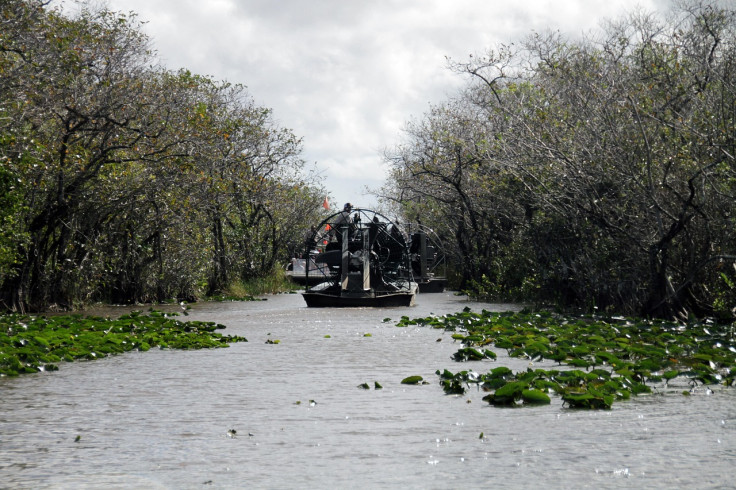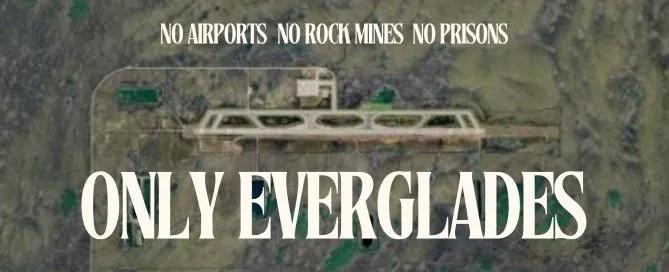Where Is Alligator Alcatraz? Size, Facilities And Why Are Environmentalists Opposing Construction Of ICE Detention Centre?
Alligator Alcatraz is a massive ICE detention center under construction in Florida's fragile Everglades, designed to hold 5,000 detainees

A sprawling new immigration detention centre, dubbed 'Alligator Alcatraz', is under construction deep within Florida's Everglades.
The controversial project, located at the Dade-Collier Training and Transition Airport in Big Cypress National Preserve, has prompted strong opposition from environmentalists, Indigenous groups and human rights advocates.
Location and Scale of the Centre
Alligator Alcatraz is being built on a deserted airstrip some 50 miles west of Miami, within the ecologically fragile Big Cypress National Preserve. The site covers approximately 39 square miles and features a 10,500-foot runway surrounded by swampland home to alligators, pythons and other wildlife.
Designed to accommodate up to 5,000 detainees, the facility is expected to be fully operational by July 2025. Construction began in late June 2025, with site works underway less than a week after the plan was announced.
Facilities and Operational Model
The site is being rapidly developed using temporary infrastructure such as heavy-duty tents and trailers for both detainees and staff, with minimal permanent construction. Natural barriers, namely the surrounding swampland and dangerous wildlife, are being used as a security deterrent. Florida Attorney-General James Uthmeier described it as a 'great opportunity for the state of Florida', while Governor Ron DeSantis and Homeland Security Secretary Kristi Noem emphasised its isolation as both secure and cost-effective. The project's annual operating cost is estimated at approximately US$450 million, with expenses potentially reimbursed through Federal Emergency Management Agency's (FEMA's) emergency shelter programme.

Why Environmentalists and Indigenous Groups Oppose
Opposition has been swift and passionate. Environmental coalitions including Friends of the Everglades, Center for Biological Diversity and Earthjustice have filed a federal lawsuit to halt construction, citing violations of the National Environmental Policy Act and Endangered Species Act. The site comprises over 96% wetlands and borders habitats of Florida panthers and other endangered species.
Indigenous communities, the Miccosukee and Seminole tribes, assert the land as ancestral territory, including ceremonial and burial grounds. Miccosukee Chairman Talbert Cypress stated, 'The Big Cypress is the Tribe's traditional homelands', while tribal elder Betty Osceola has led prayer walks to protect it.
Local authorities, including Miami-Dade Mayor Daniella Levine Cava, have demanded a full environmental impact assessment, warning of 'significant concerns' over ecological damage.
Political and Legal Polarisation
Supporters describe the project as a firm stance on rising migration that is time-efficient and secure due to its remote location. DeSantis labelled it a 'force-multiplier' for ICE and praised its speedy deployment, comparable to temporary disaster relief arrangements. Former President Trump echoed this, framing it as deterrence bolstered by natural defences.
Critics argue that officials bypassed due process, emergency laws and environmental safeguards for political posturing. The lawsuit contends that federal and state authorities rushed construction without environmental review or public consultation, thereby neglecting the National Environmental Policy Act.
Alligator Alcatraz, situated in the heart of the Everglades, represents a clash between hardline immigration strategy and urgent environmental protection. With capacity for 5,000 detainees and reliance on swampland defences, the facility raises concerns over ecological harm, endangered wildlife, and Indigenous rights. While Florida officials highlight its cost-effectiveness and rapid deployment, environmental and tribal groups continue pressing legal challenges. The coming weeks will determine whether environmental law, cultural heritage or political momentum prevails.
© Copyright IBTimes 2025. All rights reserved.

















